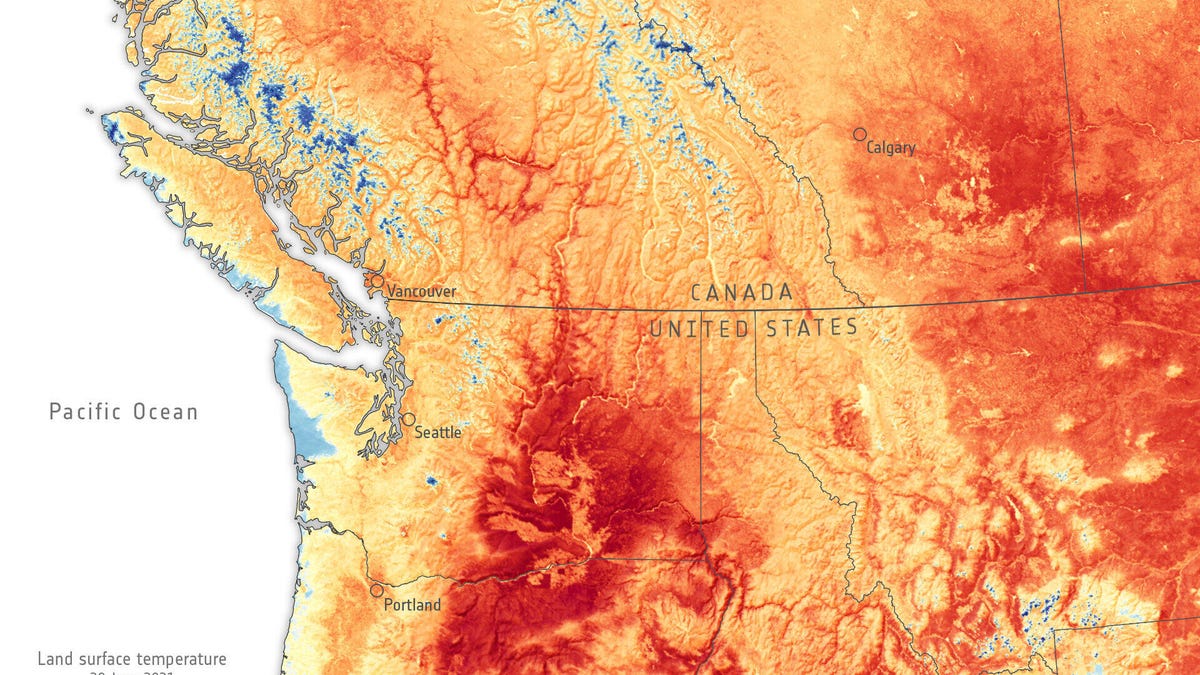Heat wave in US and Canada summed up in one staggering satellite image
A satellite mission logged a land surface temperature of 156 degrees Fahrenheit in Washington state.
A historic heat wave descended on the Pacific Northwest in the US and western Canada at the end of June, sending temperatures soaring from Portland to Vancouver -- cities typically known for temperate conditions. The European Space Agency shared an image on Thursday that brings the heat wave into stark, sobering focus.
ESA described the heat wave as "particularly devastating -- with temperature records shattered and hundreds of people falling victim to the extreme heat." The image comes from the Copernicus Sentinel-3 satellite mission from June 29, and shows land surface temperatures for the area.
Land surface temperature measures heat radiating from the ground and can vary considerably from air temperatures, which are typically used in weather forecasts and reports. "Scientists monitor land surface temperature because the warmth rising off Earth's landscapes influences (and is influenced by) our world's weather and climate patterns," NASA explains.
While Vancouver, Calgary and Portland all registered surface temperatures of over 109 degrees Fahrenheit (43 degrees Celsius), other areas were even harder hit. According to ESA, "the hottest temperatures recorded are in the state of Washington (visible in deep red) with maximum land surface temperatures of around 69 degrees Celsius." That works out to 156 degrees Fahrenheit.
The air temperatures in Portland in late June smashed records while the village of Lytton in Canada reached 121 degrees Fahrenheit (49.5 degrees Celsius), setting a new record for the entire country.
At 4:20pm, Lytton Climate Station reported 49.5°C, once again, breaking the daily and all-time temperature records for the 3rd straight day. Final numbers and all other temperature records will be posted later this afternoon. #BCStorm pic.twitter.com/jYpvxM0iIy
— ECCC Weather British Columbia (@ECCCWeatherBC) June 29, 2021
The Pacific Northwest and Canada aren't the only unusual locations suffering from sweltering heat this year. Sentinel-3 logged a surface temperature of 118 degrees Fahrenheit (48 degrees Celsius) in Siberia above the Arctic Circle earlier in June.
Check out our explainer for more on what's happening with the heat wave and megadrought in the US as the global climate crisis continues to fuel extreme weather.
Follow CNET's 2021 Space Calendar to stay up to date with all the latest space news this year. You can even add it to your own Google Calendar.


